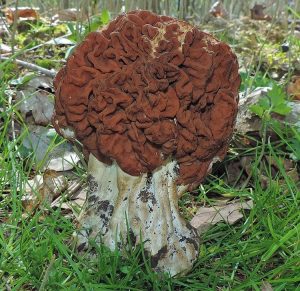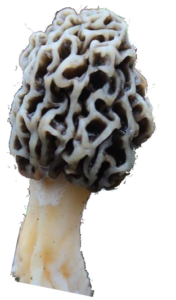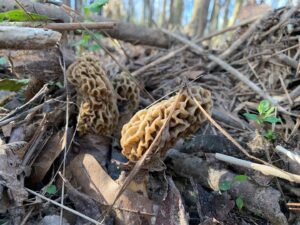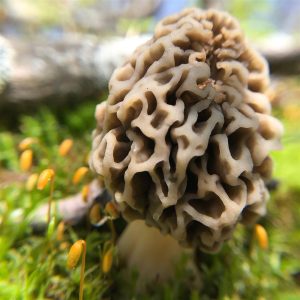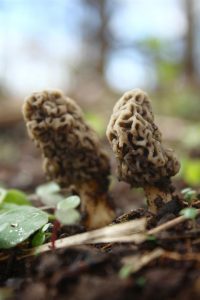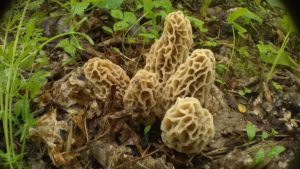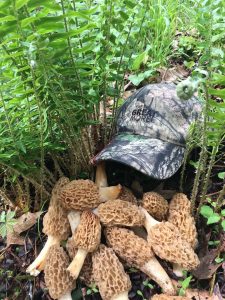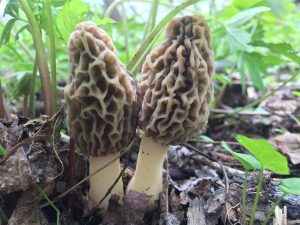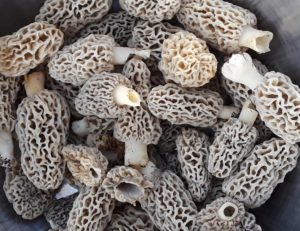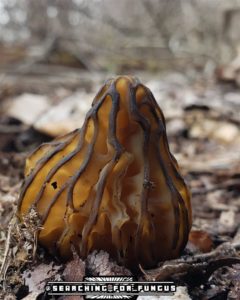Understanding and Identifying the False Morel
While The Great Morel website is intended to be an enjoyable experience and not to be used as a mushroom identification page – this page takes exception to that. The “False Morel” is the most confusing and oftentimes misidentified species of the morel family and this page is intended to help have a better understanding of this ugly mushroom. The information below should be taken with the utmost seriousness. This page is not an attempt to explore the false morel from a scientific perspective but to give you a basic understanding, and assist you in uncovering its unique identity and characteristics. You can find links at the bottom of the page that will direct you to other research papers which delve deeper into the biological composition of these fungi.
The “False Morel” has several species which carry scientific names such as Gyromitra esculenta, Verpa, Hellvella, and Disciotis. The Verpa and gyromitrin species are the most often misidentified variety. The gyroomitrin is often referred to as the “red mushroom”, the “beefsteak mushroom” or the “lorchel”. There are several true species of the false morel, and while some will say they can prepare and eat the false morel with no problem, others have a drastically opposite reaction to them. Hence, The Great Morel suggests that you do not attempt to digest this particular mushroom.
Research shows this species of the morel family is said to contain a toxic chemical called Gyromitrin, a toxic and possible carcinogenic chemical. There are white papers out on the internet that suggest this chemical can be removed from the morel by repeatedly boiling small cut-up pieces in water. Some shroomers will tell you they have no ill side effects from ingesting properly prepared false morels, yet evidence will point out that even ingesting small amounts of improperly treated false morels can have serious side effects. Even the preparation of the false morel in itself can be dangerous and may cause adverse reactions, thus avoid inhaling fumes and steam. Research also points out there are various species of false morels that grow around the world, and while some may not be as toxic as others, it is wise to understand this and to do your own research wisely.
Some of the known side effects are severe cases of diarrhea, severe headaches, vomiting, nausea, extreme dizziness, and YES even possible death. The Great Morel strongly suggests that you leave the false morel exactly where you found it. The Great Morel also suggests (as many others do) that even if you do not have a reaction yourself, do not offer the false morel to anyone else, especially to children and pregnant women.
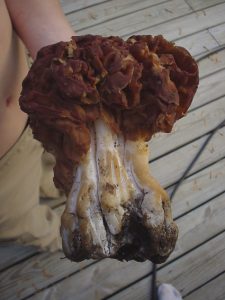
Let’s start out with some basic characteristics which should tip you off right away. Notably is just how ugly they can appear, as can be seen in the picture above. The texture or makeup of the cap or head can typically have brain-like features, with folds in the caps, which some might describe as wrinkles, and are often brittle to the touch. The color will appear reddish or a brownish red, and will darken to almost a blackish red as the false morel ages. You can see some of this darkening beginning to take place on the image below. Sizes can vary from 2 inches to 10 inches.
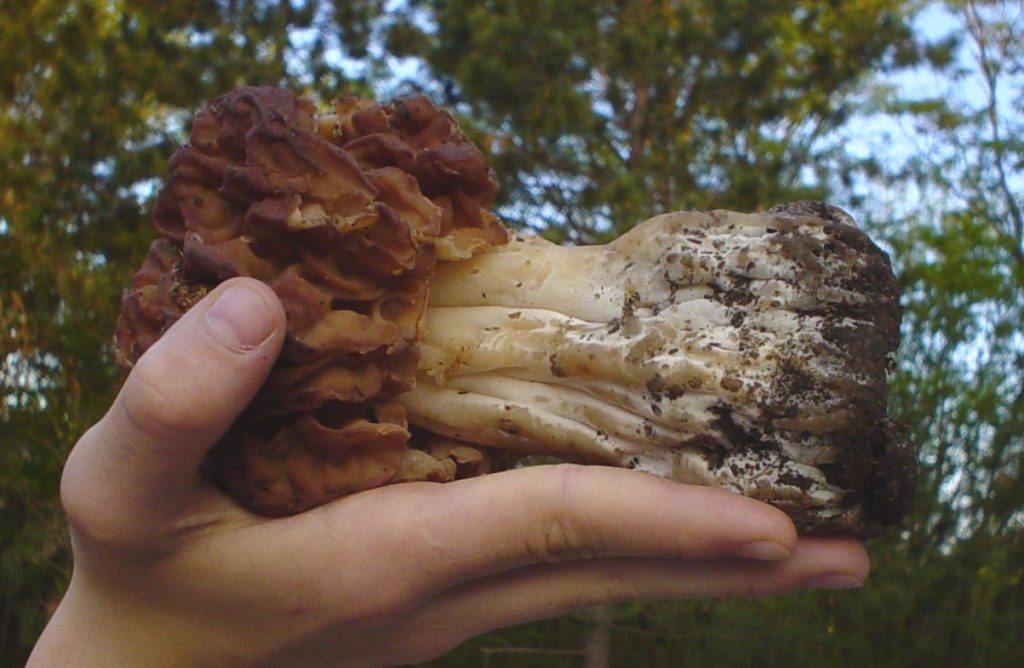
One of the easiest ways of determining the false morel is by slicing it long ways. See the image below of a crosscut sectioning and note the meaty texture of the stem. False morels are not hollow, which is the most definite tip that you have stumbled up one of these ugly bad boys. The false morel shown in this image is also quite heavy as it is almost solid in the stem and meaty, and often referred to as “cottony”. Some expert mycologists go into greater detail in defining the relationship of the cap and the stem. You check out the links below for more photos and detail descriptions of the physical relationship between the cap or head and stem.
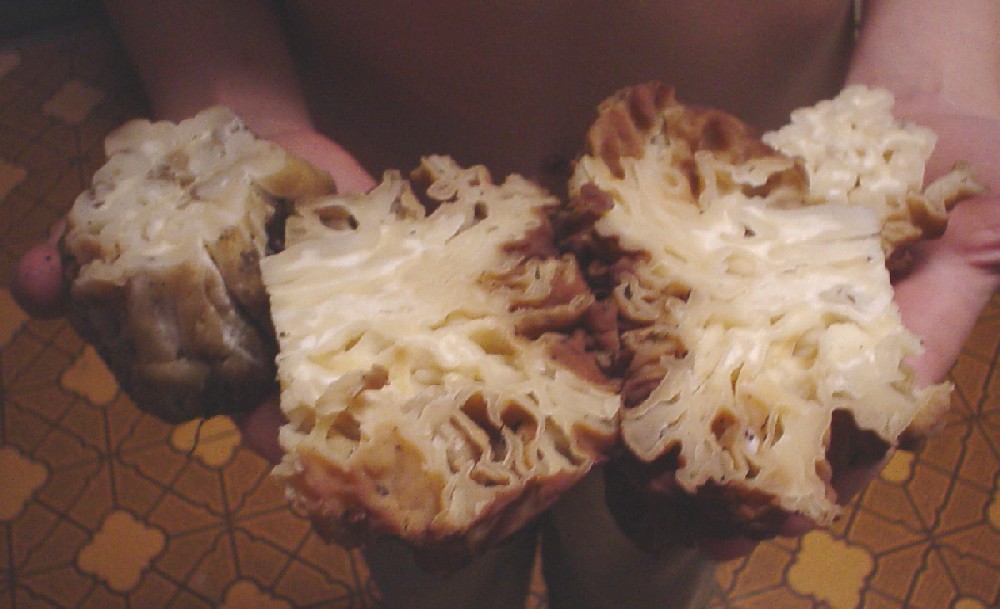
Now if you look at the two images below show what an edible morel looks like when it is sliced. The first is of a small yellow (cream) morel and the second image is what is referred to as a grey morel. Take a moment and compare it to the image above, you’ll see the notable difference in both the stem and how the cap is attached to the stem. The yellow and grey morel’s stem is hollow. You can view images of all the edible morels on the Varieties Picture page by clicking here as it shows the images of the edible variety.
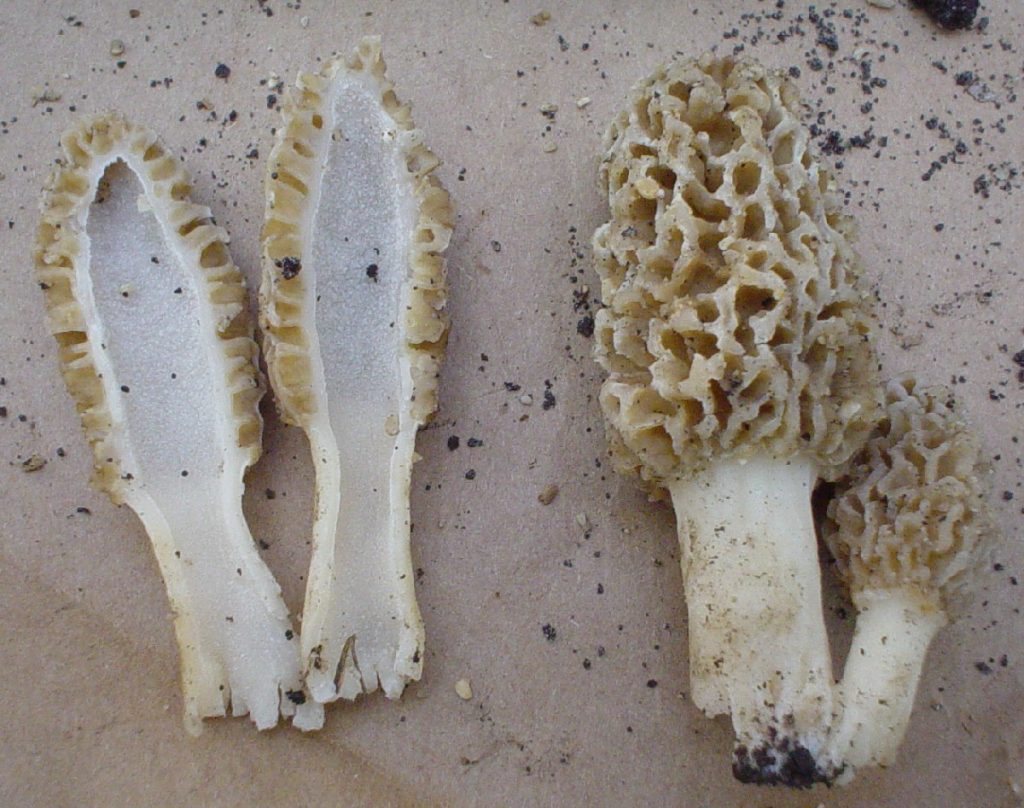
<
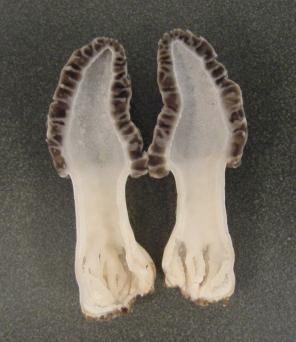
This additional bit of information comes from Learn Your Land who has a YouTube page which highlights fungus, plants, trees and animals in the Allegheny Plateau in Western Pennsylvania. He adds this when discussing the image below“…this mushroom doesn’t make its way up into Western Pennsylvania too often….though when it does, a photograph is definitely obligatory. Gyromitra caroliniana is somewhat of a more southern species, one that is often referred to as a false morel. An interesting term as this fungus and a true morel can be as different as night and day. Okay, not in every regard, though you’ll hardly see a true morel looking as big and beefy. You can also cut both fungi in half and notice that the Gyromitra fungus is chambered, while the true morel is hollow from the top to the bottom. Plenty of Gyromitra species exist, and plenty of morel (morchella) species exist as well. Learn them all and I promise you a life of bereft boredom.”
The Great Morel understands the importance of identifying your morels, and takes identification very seriously, therefore, it is suggested that you also visit the links below to a few of the great sites and white papers, as well as other images of the various varieties of the false morels. These are very informative sites and The Great Morel always suggests caution even after reviewing these sites.
- More False Morel Images from The Great Morel. If you haven’t already visited this page, then it is a great source for more images to help you identify this ugly fungi.
- Mushroom Appreciation – Snow False Morels: Identification and Foraging Guide.
- Tom Volk’s Fungus – Tom’s has put together this great page focusing on the False Morel. Great images and even better data.
- Mushroom-Expert.Com – a newly established project dubbed the “The False Morel Project: Studies in Gyromitra, Disciotis, Verpa, and Helvella.” If one is looking for one of the best mushroom identification sites on the net this is it!
- Spring Morels and False Morels of Midcontinental U.S. – a fantastic white paper by Donald M. Huffman and Lois H. Tiffany on identifying morels.
- The Missouri Department of Conservation (Online) Edible and Poisonous MUSHROOM Page – a great source of information on identification of the good, the bad and the ugly.
- MykoWeb – Gyromitra esculenta – MykoWeb, pages devoted to the science of mycology (the study of the fungi) and the hobby of mushrooming (the pursuit of mushrooms) has some great images and data on the false morel.
Click for Additional Morel information
- Identifying the False Morel
- Additional False Morel Images
- The Edible Good Morels – Varieties
- Frequently Asked Questions
- Top of Page

